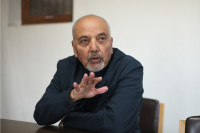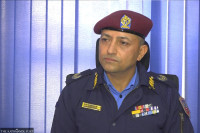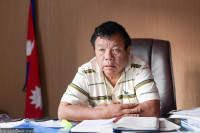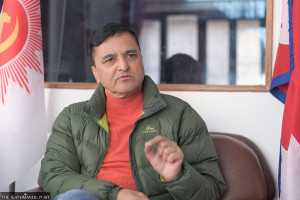Interviews
‘Passing the bills is a prerequisite’
EU Ambassador Nona Deprez on the ‘air safety list’ of the European Commission and Nepal’s progress on aviation safety.
Sangam Prasain
EU Ambassador to Nepal Nona Deprez on the air safety list of the European Commission and Nepal’s progress on aviation safety.
Excerpts:
Why is it important for the Civil Aviation Authority of Nepal to be separated into regulator and service provider?
One of the high-priority actions stemming from the ICAO audit of 2013 was that Nepal has to ensure that there is a distinct separation of responsibilities between the Civil Aviation Authority of Nepal (CAAN) and the aviation industry/service providers. Indeed, perceived or potential conflict of interest in areas where there is no clear separation between aviation regulators and service providers has an impact on air safety. The function separation of the regulatory and service provider roles by CAAN is a longstanding issue in the context of the Commission’s consultations with Nepal in the context of the EU Air Safety List; the government of Nepal in 2017 decided to lift that perceived or potential conflict of interest by splitting CAAN into two entities: an oversight body and a service provider. These bills have been in Parliament for the past four years.
Can Nepal be removed from the 'air safety list' of the European Commission after the separation?
There are different European institutions with competencies in aviation matters. The EU Safety List is established by the European Commission (EC) after consultation with the 27 EU Member States in the Air Safety Committee. The European Union Aviation Safety Agency (EASA) provides technical support and advice to the European Commission and the Air Safety Committee. These are very technical matters, decided by technical experts. The EU Safety List is about protecting the safety of not only EU citizens, but also Nepali citizens.
Based on an evaluation of whether sufficient progress in safety has been reached, the European Commission would be able to decide whether or not to organise an on-site assessment visit to Nepal. The report of this visit would then be submitted to the Air Safety Committee. Perceived or potential conflict of interest is one of the areas of safety they would look at. The Air Safety Committee would then propose a decision to the Commission.
An EASA audit team is scheduled to visit Nepal in September to audit the aviation sector. How should Nepal prepare for it?
Since 2021, EASA has implemented a technical assistance project (funded by the European Commission) in order to support CAAN to achieve the full implementation of and compliance with ICAO Standards and, where appropriate, Recommended Practices, in key areas of safety oversight. In that context, EASA has offered to conduct an on-site assessment of the safety situation in Nepal in the upcoming weeks, which is not an audit like ICAO’s ones. We are looking forward to that visit. This assessment by EASA will ensure that the Air Safety Committee is provided with the most objective and up-to-date factual information.
Is the EU closely watching Nepal’s progress in ensuring aviation safety? What consequences will Nepal’s aviation industry face if the Civil Aviation Bills which have been pending in Parliament for the last four years are not passed?
Absolutely, there are regular contacts between the European Commission and CAAN and EASA also manages the EU–South Asia Aviation Partnership Project (EU-SA APP) and currently the successor EU–SA APP II project with the main objective to enhance the partnership between the EU and the South Asia region in the domain of civil aviation.
The project includes sharing of best practices and experts deployed to support the implementation by on-site development of procedures, and technical and on-the-job training, either bilaterally or regionally. Through this project, CAAN and EASA have since December 2016 established a very satisfactory partnership with many examples of successful collaboration. Passing the bills is a prerequisite to initiating the process that would lead to the ultimate lifting of the ban.




 11.12°C Kathmandu
11.12°C Kathmandu













